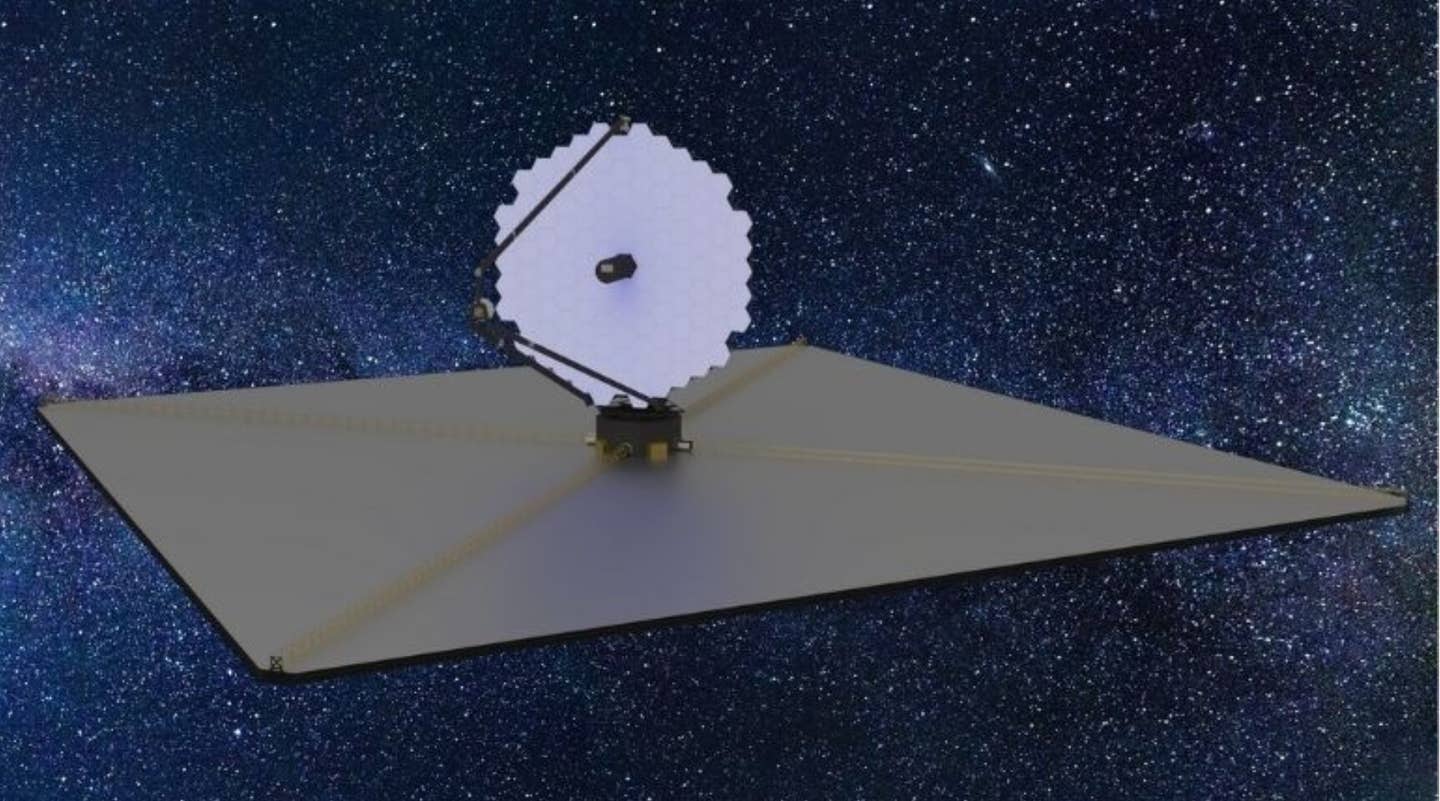Major endorsement for new space mission to find ‘Earth 2.0’
A major new space telescope searching for ‘Earth 2.0’—to Succeed Hubble and the James Webb Space Telescope —is one step closer to reality.

[Nov 9, 2021: University of Leicester]
Artist's impression of what the LUVOIR telescope could look like once operational. (Credit: NASA GSFC)
A major new space telescope searching for 'Earth 2.0'—to Succeed Hubble and the soon-to-be-launched James Webb Space Telescope (JWST)—is one step closer to reality.
The Large Ultraviolet Optical Infrared Surveyor (LUVOIR) is a leading mission concept to meet the recommendations of the long-awaited Astro2020 Decadal Survey, which identifies three 'priority scientific areas' for investment in astronomy and astrophysics in the U.S. over the next 10 years and beyond.
Martin Barstow, Professor of Astrophysics and Space Science at the University of Leicester, was appointed by the UK Space Agency as an external observer to the LUVOIR study team, and is co-author of the report backing the proposal. He is also chair of the Space Telescope Institute Council, which provides oversight to the body operates Hubble and will operate JWST.
Professor Barstow says that "Earth-like planets orbiting other stars are enormously difficult to find and detecting them is beyond the capabilities of our current planned space missions, but we are developing the technologies to carry out this search and are close to having the tools ready to fly in space."
"A mission like LUVOIR is the tool we need, and is a tremendously exciting prospect. The search for habitable worlds and life elsewhere in our galaxy is, in my view, one of the most important scientific quests."
"I will look forward to having that answer to the question 'are we alone' within my lifetime."
Related Stories
LUVOIR is the latest incarnation of a true successor to the Hubble Space Telescope, and is designed to observe targets in UV, visible and infrared—compared to JWST's sole infrared capability.
Simulation of our own inner Solar System in visible light viewed from a distance of 40 light-years with the LUVOIR telescope, similar to the images that could be captured of exoplanets in our galactic neighborhood. The enormous glare from the Sun has been suppressed with a coronagraph instrument so the faint planets can be seen. (Credit: R. Juanola Parramon, N. Zimmerman, A. Roberge (NASA GSFC))
One of its key science goals would be to find and characterize Earth-like planets orbiting nearby stars. The telescope is powerful enough to find approximately 100 of these exoplanets which can then be observed in detail to search for evidence of life beyond our Solar System.
Initial designs show some similarities to JWST, with a segmented telescope assembly and large sunshade to be deployed in orbit. But LUVOIR would boast a segmented mirror up to 16m in diameter—compared to the current record 6m diameter array fitted to JWST.
NASA will now examine the report's recommendations and start to implement technology studies in order to develop a mission incorporating LUVOIR and other proposals.
While the new mission would be led by NASA, international collaboration with partners such as the European Space Agency (ESA) is likely, and will enable specialists from the University of Leicester and Space Park Leicester to input into the mission's design, manufacture and testing.
Leicester engineers provided the mechanical engineering lead for the Mid-Infrared Instrument (MIRI) to be carried on board the James Webb Space Telescope. Space Park Leicester boasts a state-of-the-art clean room and a range of manufacturing capabilities for the space sector.
The Decadal Survey on Astronomy and Astrophysics 2020 is a 624-page report authored by an influential panel of astrophysicists and astronomers. In addition to endorsing a major new space-based observatory, other recommendations identify ground-based opportunities as well as changes to the way NASA selects new programs. The full report is available from the National Academies of Sciences, Engineering and Medicine.
For more science and technology news stories check out our New Discoveries section at The Brighter Side of News.
Like these kind of feel good stories? Get the Brighter Side of News' newsletter.
Tags: #New_Discoveries, #Space_News, #Telescopes, #Earth, #Science, #Research, #Planetary_Science, #The_Brighter_Side_of_News
Joseph Shavit
Head Science News Writer | Communicating Innovation & Discovery
Based in Los Angeles, Joseph Shavit is an accomplished science journalist, head science news writer and co-founder at The Brighter Side of News, where he translates cutting-edge discoveries into compelling stories for a broad audience. With a strong background spanning science, business, product management, media leadership, and entrepreneurship, Joseph brings a unique perspective to science communication. His expertise allows him to uncover the intersection of technological advancements and market potential, shedding light on how groundbreaking research evolves into transformative products and industries.



